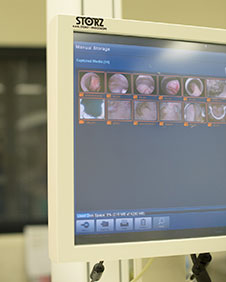Hypoactive Sexual Desire Disorder (HSDD) is the commonest sexual dysfunction in the climacteric. (1)
Testosterone levels fall as a result of ageing and does not display the precipitous fall at the age of natural menopause as the fall in estrogen demonstrates.(2). The whole topic is bedevilled by the difficulty in measuring testosterone, especially in females. A further complicating factor is that weakly bound testosterone can easily dissociate from albumin at tissue level. Therefore serum levels may not accurately define dynamics at a cellular level.
The reduced levels of testosterone in postmenopausal women are associated with a loss of libido, decreased sexual activity, diminished feelings of well- being and fatigue. If the latter causes personal or interpersonal distress, testosterone therapy is an option. This applies especially to the scenario of a patient who has had a bilateral oophorectomy where a crash menopause often ensues.
The TTP (transdermal testosterone patch) is an effective treatment for HSDD in surgically menopausal women receiving concomitant estrogen therapy.(3). Unfortunately, this medication is not available in South Africa at present.
Appropriate candidates for testosterone therapy include:
a) HSDD in the late reproductive years and beyond if it causes personal or couple distress
b) Premature ovarian insufficiency
c) Surgical menopause
d) Adrenal insufficiency or hypopituitism (4)
The ADORE study demonstrated that TTP can be used in women reaching natural menopause with success. (5)
Testosterone therapy can also be used in patients without concomitant estrogen therapy. The role of estrogens , however, must not be forgotten. The alleviation of hot flushes, ensuring better sleep patterns and thus less fatigue, the treatment and prevention of vaginal atrophy may be enough to reverse a negative sexual cascade.
Alternatives to testosterone therapy include tibolone as it does have weak androgenic activity and does not increase SHBG (sex hormone binding globulin). (6) Dehydroepiandrosterone (DHEA) is a neurosteroid with a wide range of functions. (7). The role of DHEA in the improvement of sexual function is controversial and we await more studies.
References:
1) Graziottin A. Prevalence and evaluation of sexual health problems – HSDD in Europe. J Sex Med 2007;4(suppl3)211-219
2) Schwenkhagen A. Hormonal changes in menopause and implications on sexual health. J Sex Med 2007:4(suppl3)220-226
3) Kingsberg S. Testosterone treatment for hypoactive sexual desire disorder in surgically menopausal women. J Sex Med 2007;4(suppl3):227-234
4) Susan R Davis. Should women receive androgen replacement therapy’ and if so, how? Clinical Endocrinology(2010)72,1449 – 154
5) N Panay et al. Testosterone Therapy of HSDD in naturally menopausal women: the Adore Study. Climacteric1: 121 – 131.
6) A R Genazzini etal. Beneficial effect of tibolone on mood, cognition, well-being, & sexuality in menopausal women. Neuropsychiatric Disease & treatment 2006:2(3)299-307
7) Traish AM et al. DHEA – A precursor steroid or an active hormone in human physiology. J Sex Med 2011;8:2960-2982
